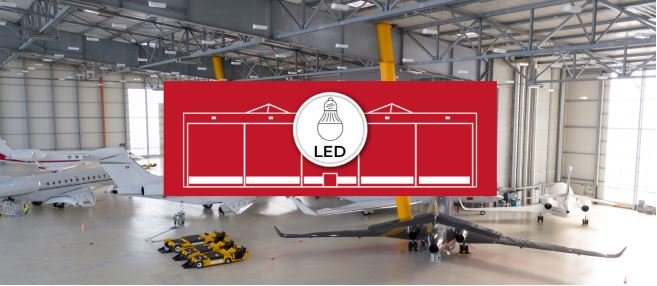Geneva Airpark: Optimized Services and Energy Savings
/In 2023, Geneva Airpark continued to invest in energy transition with the complete renovation of the lighting in its 10,000 sq meter hangar, which is now 100% LED.
By 2022, Geneva Airpark had already acquired four latest-generation ITWGSE 7400 Zero Emission eGPUs, which provided 900 hours of energy to its customers. Geneva Airpark is thus responding to Geneva Airport’s (LSGG) efforts to reduce the ecological footprint of its activities and to meet the requirements of the Swiss OSTRAL plan for optimizing electricity consumption.
45 to 50% electricity reduction with almost 300 LEDs
Geneva Airpark’s latest major investment is the renovation of its hangar lighting system, which was completed in July 2023. Covering a total surface area of 10,000 sq meters, the lighting, comprising 153 main lights and 138 emergency lights, is now 100% LED. It is equipped with a control system to adjust the light intensity according to the needs of the activity and the brightness outside.
Thanks to LED technology and regulating use as closely as possible to the needs of the infrastructure, the reduction in electricity consumption is estimated at between 45 and 50% compared with the previous halogen system. This reduction in electricity consumption will mean that Geneva Airpark is no longer considered to be a large consumer (over 100 kWh per year) according to the criteria of Services Industriels de Geneve (Geneva’s energy supplier).
Organized at a height of 23 meters, with two access platforms present at all times, the worksite at the Geneva Airpark hangar was divided into six zones to avoid holding up operations. According to the schedule, it took place over six weeks between June and July 2023, when activity was lower.
Cleaner and quieter eGPUs
In 2022, Geneva Airpark invested in four latest-generation eGPUs (Electric Ground Power Units), complying with the ISO 6858: 2017(E) standard for aircraft electrical power. The 100% electric ITWGSE 7400 Zero Emission eGPUs drastically reduce carbon dioxide and nitrogen dioxide emissions. They have a very small environmental footprint compared with combustion APUs, which consume a lot of fuel.
These new generators are also much quieter and can be used for longer periods of time than the APUs, whose use is restricted by the Geneva Airport authorities because of noise limits.


